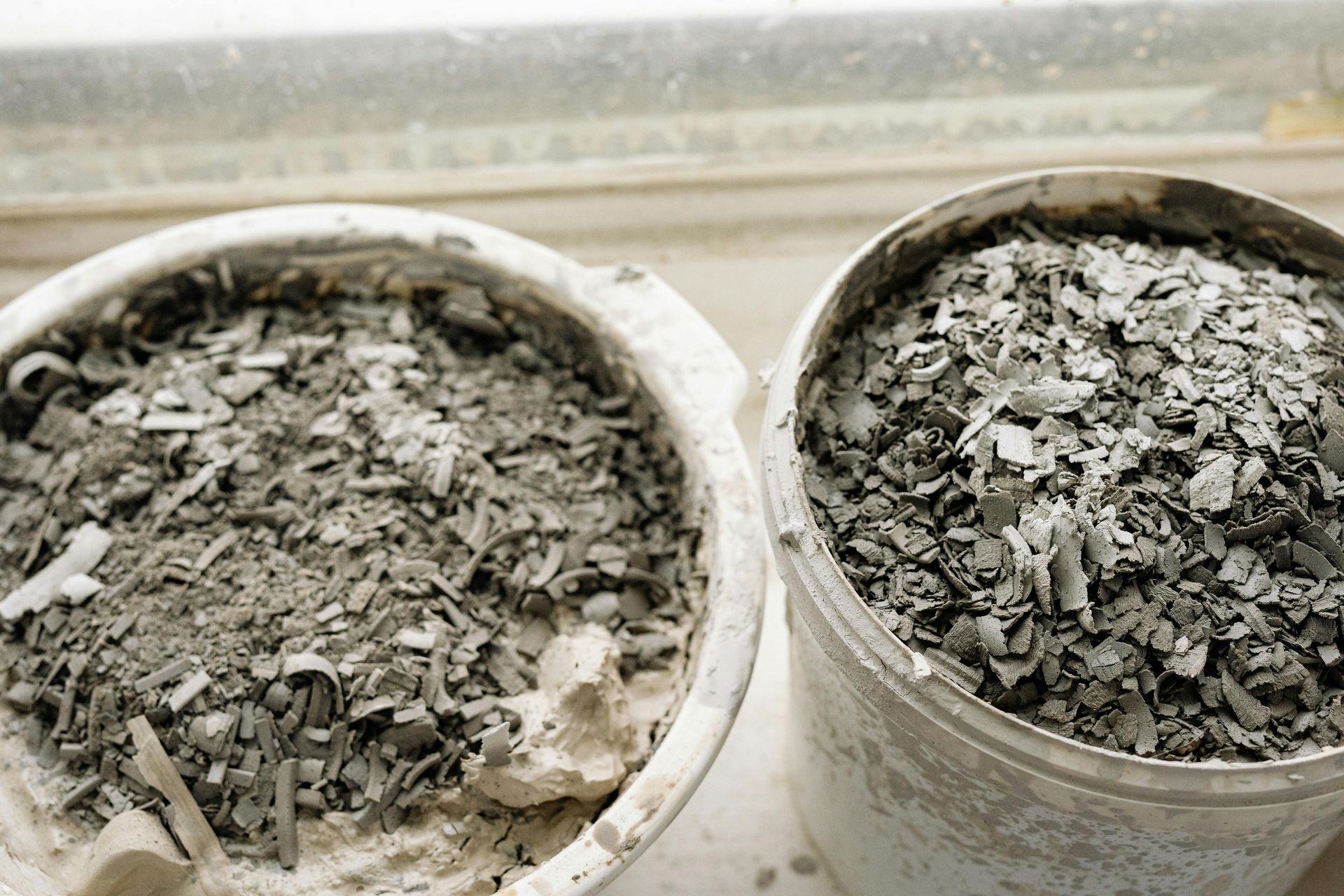A Guide to Staining Your Concrete with Pueblo Concrete
Plain, gray concrete is a practical and durable foundation for your home’s patios, walkways, and garage floors. But what if that functional surface could be more? What if you could transform it into a stunning design element that mimics the rich, variegated tones of natural stone or the warm hues of aged leather? This is the transformative power of concrete staining, a process that turns ordinary concrete into an extraordinary feature, adding significant value and character to your property.
While staining concrete can seem like an achievable weekend project, the reality is that creating a beautiful, professional-grade finish is a science. The process is full of potential pitfalls, from improper surface preparation that leads to peeling, to uneven application that creates a blotchy mess. At Pueblo Concrete, we provide expert guidance and professional services to help homeowners navigate the complexities of concrete staining. We ensure you get a durable, flawless result that enhances your home’s beauty for years to come.
Why Professional Guidance is Key for Concrete Staining
Concrete staining is fundamentally different from painting a wall. The stain works by either chemically reacting with the concrete or penetrating deep into its pores to deposit permanent color. This means mistakes are not easily painted over or corrected. A poorly prepared surface, the wrong type of stain, or an incompatible sealer can lead to a finish that fades quickly, peels away, or looks amateurish—problems that are both difficult and expensive to fix.
This is where the expertise of Pueblo Concrete becomes invaluable. Our team understands the nuances of different stain products, application techniques, and the absolute necessity of meticulous surface preparation. We help you avoid common DIY mistakes and ensure every step, from choosing a color to applying the final protective sealer, is executed perfectly.
Step 1: Choosing the Right Stain for Your Vision
The first and most exciting step is deciding on the look you want to achieve. This decision goes beyond just picking a color from a sample chart. There are two primary categories of concrete stains, each with unique characteristics and best-use cases.
Acid-Based Stains
Acid stains are the classic choice for achieving a rich, translucent, and variegated appearance. They don't create a solid, uniform color like paint. Instead, an acid stain contains metallic salts suspended in a mild acid solution, which chemically reacts with the free lime (calcium hydroxide) in the concrete. This reaction lightly etches the surface and creates beautiful, multi-toned effects that are entirely unique to each slab.
- Best For: Achieving deep, earthy tones like tans, rich browns, terracotta reds, and soft blue-greens.
- Appearance: Mottled, marbled, and translucent. The final look is dependent on the unique chemical makeup of your concrete, so no two acid-stained floors will ever be identical.
- Considerations: The color palette is more limited, and the final outcome is less predictable, which is a key part of its organic charm. Application requires significant safety precautions due to the acidic materials.
Water-Based Stains
Water-based stains are a more modern and versatile alternative. They are non-reactive and work like a dye, penetrating the pores of the concrete to deposit pigment. This method offers a much broader spectrum of colors and provides a more consistent, uniform finish compared to acid stains.
- Best For: Achieving a vast range of colors, from subtle earth tones to vibrant reds, yellows, and blues. They are perfect for creating specific designs, patterns, or even logos with stencils.
- Appearance: More opaque and uniform than acid stains, offering predictable and repeatable color.
- Considerations: Because they do not chemically react, the quality of the finish is highly dependent on the porosity of the concrete. Flawless surface preparation is absolutely critical for water-based stains to absorb properly and bond correctly.
The experts at Pueblo Concrete will consult with you to determine which type of stain is best suited for your project, your design goals, and your specific concrete surface. We can provide physical samples and show you examples from our portfolio to help you visualize the final result.
Step 2: The Critical Importance of Surface Preparation
Regardless of the stain you choose, the success of the entire project hinges on one thing: meticulous surface preparation. The concrete must be completely clean, structurally sound, and porous enough to accept the stain. Any contaminants left on the surface will prevent the stain from penetrating or reacting properly. This is the most labor-intensive part of the process and where most DIY projects fail.
Our professional preparation process includes several vital steps:
- Deep Cleaning: We begin by thoroughly cleaning the concrete to remove all dirt, oil, grease, and grime. This often involves using industrial-grade degreasers and high-powered pressure washing.
- Removing Old Coatings: Any existing paint, epoxy, or old sealer must be completely stripped away. We use mechanical methods like diamond grinding or powerful chemical strippers to get back to bare, untouched concrete. This is crucial, as any existing coating will block the stain from ever reaching the concrete.
- Opening the Pores: For a stain to absorb correctly, the concrete's pores must be open. Very smooth, hard-troweled surfaces (like many garage or basement floors) are not porous enough. We may need to lightly grind or acid etch the surface to profile it. We verify porosity with a simple water test—if water beads on the surface instead of soaking in, it’s not ready for staining.
- Rinsing and Neutralizing: After any chemical cleaning or etching, the slab must be thoroughly rinsed and neutralized to remove all residue. Any leftover chemicals will interfere with the stain's performance and the sealer's ability to adhere.
Step 3: The Art and Science of Application
Applying concrete stain is a delicate craft that requires precision, the right tools, and an experienced hand. The technique varies significantly depending on the type of stain and the desired aesthetic.
- Acid Staining: This process involves carefully spraying the acid stain onto the concrete and often working it into the surface with a non-metallic brush to ensure an even reaction. The stain must then be left undisturbed for several hours to fully react before the residue is neutralized and meticulously cleaned off. Our team knows how to manage the application to create beautiful, natural variations without creating unsightly lines, pools, or dark spots.
- Water-Based Staining: These stains can be applied with a high-volume, low-pressure (HVLP) sprayer, a foam roller, or even a sponge to create different effects. Achieving a uniform color requires a consistent and overlapping application technique, while a layered or faux-finish look can be created by using multiple colors. Our skilled technicians can produce a wide range of custom looks to match your home's decor.
Step 4: Sealing for Durability and Lasting Beauty
Staining provides the color, but sealing provides the protection. The sealer is a clear, protective topcoat that is absolutely essential for any stained concrete project. It locks in the color, prevents it from fading due to UV exposure (especially important for outdoor patios), and protects the surface from moisture, stains, and abrasion.
Choosing the right sealer is just as important as choosing the right stain.
- Acrylic Sealers: These are a popular and cost-effective choice for both interior and exterior applications. They are available in water-based and solvent-based formulas and do an excellent job of enhancing the color of the stain.
- Epoxy Coatings: For high-traffic interior areas like garages, basements, or commercial spaces, an epoxy sealer provides superior durability, impact resistance, and chemical resistance.
- Urethane Sealers: Often used as a final topcoat over epoxy, urethanes offer the highest level of abrasion resistance and UV stability, which prevents the sealer from yellowing over time with sun exposure.
The sealer's finish also dramatically impacts the final look. You can choose from high-gloss, semi-gloss, satin, or matte finishes. A high-gloss sealer will make the colors pop and create a dramatic, wet look, while a matte finish provides a more subtle and natural appearance. Pueblo Concrete will help you select the perfect sealer to provide the right balance of appearance, performance, and longevity for your specific needs.
Let Pueblo Concrete Guide Your Staining Project
Transforming your concrete from dull gray to dazzling color is one of the most impactful upgrades you can make to your home. By partnering with Pueblo Concrete, you can be confident that the job will be done right, resulting in a beautiful and durable finish that you can enjoy for years to come. We remove the guesswork and risk from the process, providing professional expertise every step of the way. Ready to bring rich color and new life to your concrete surfaces? Contact Pueblo Concrete today for a professional consultation and estimate on our concrete staining services!
Meta Information
Meta Title: Guide to Concrete Staining Services | Pueblo Concrete
Meta Description: Learn how to stain concrete with expert guidance from Pueblo Concrete. We help you choose colors, prepare the surface, and seal for a beautiful finish.
You might also like


